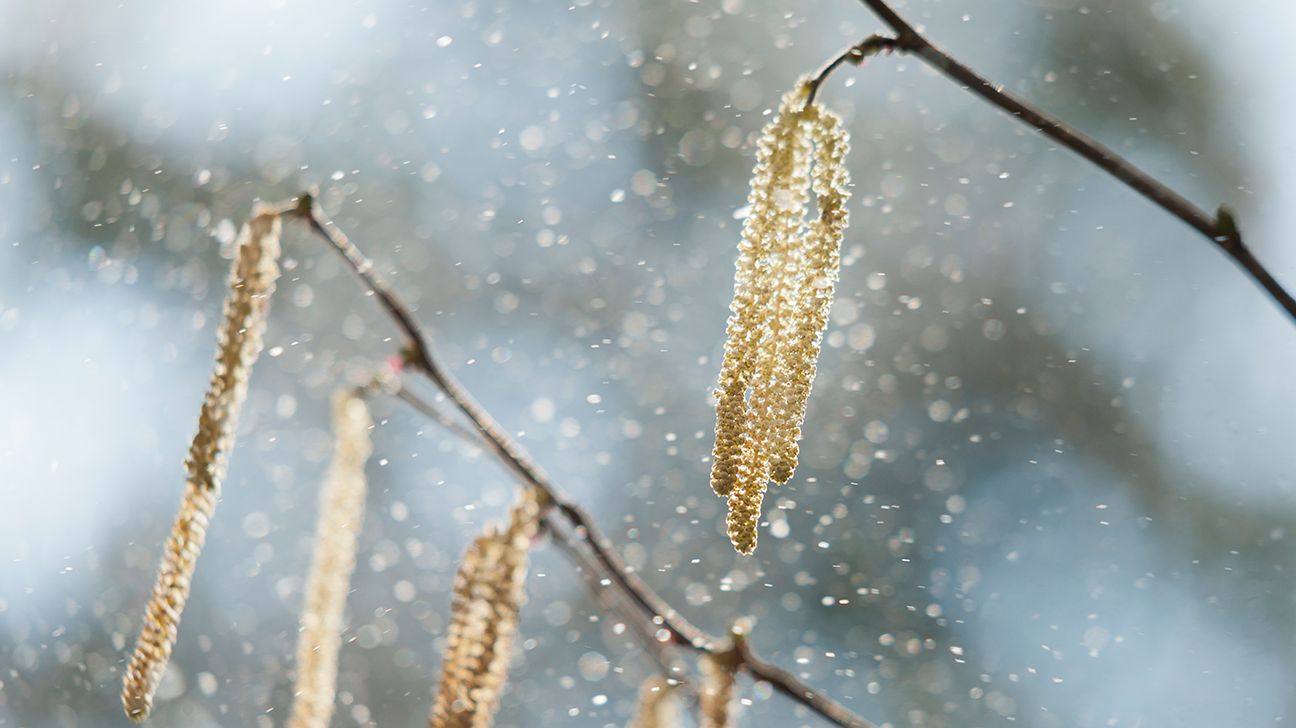We include products we think are useful for our readers. If you buy through links on this page, we may earn a small commission. Here’s our process.
Healthline only shows you brands and products that we stand behind.
Our team thoroughly researches and evaluates the recommendations we make on our site. To establish that the product manufacturers addressed safety and efficacy standards, we:- Evaluate ingredients and composition: Do they have the potential to cause harm?
- Fact-check all health claims: Do they align with the current body of scientific evidence?
- Assess the brand: Does it operate with integrity and adhere to industry best practices?
The pollen count measures how much pollen is currently in the air. Tracking local pollen counts can be a simple way of managing seasonal allergy symptoms.

Pollen is a common allergen. It can lead to symptoms such as itchy eyes, sneezing, and congestion. The amount of pollen in the air is known as the pollen count.
Higher pollen counts are linked to worse allergy symptoms. Tracking the pollen count in your area can help you prepare for high pollen days. Keep reading to learn more about how the pollen count can affect you.
Pollen count is the measurement of the average number of grains of pollen in a cubic meter of air.
Pollen counts can fluctuate throughout the week and even throughout the day. The higher the pollen count is, the more likely it is that people with allergies triggered by pollen will experience allergy symptoms.
What affects pollen count?
Many aspects of the weather and environment can affect how high the pollen count is.
The types of plants in your area — including flowers, trees, grasses, and more — will determine what kinds and how much pollen is in the air. These plants may also release pollen at different times of the day or season.
Hotter, drier, and windier weather conditions also help spread pollen, while cooler and rainier conditions lower the pollen count. Shifting weather patterns due to climate change may cause more or less pollen in your area than has been typical.
The pollen scale can help you understand how much pollen is in the air.
The pollen scale varies slightly by the type of pollen. For instance, any grass pollen count below 5 is considered low, but tree pollen counts aren’t classified as low until they fall below 15. The scale for tree, grass, and weed pollen can be seen below.
| Tree pollen grains per meter | |
|---|---|
| Low | 0 to 14 |
| Moderate | 15 to 89 |
| High | 90 to 1,499 |
| Very high | over 1,500 |
| Grass pollen grains per meter | |
|---|---|
| Low | 0 to 4 |
| Moderate | 5 to 19 |
| High | 20 to 199 |
| Very high | over 200 |
| Weed pollen grains per meter | |
|---|---|
| Low | 0 to 9 |
| Moderate | 10 to 49 |
| High | 50 to 499 |
| Very high | over 500 |
There are several organizations that keep track of pollen counts, both nationwide and locally. Typically, any website or app that tracks weather will also track pollen count. Apps designed just for tracking pollen, such as the Allergy Plus app and My Pollen Forcast app, are also available.
You can also check websites such as the American Academy of Allergy, Asthma & Immunology. On this site, you can find your location on their map and find up-to-date information. You can also sign up to get email alerts about pollen counts in your area.
Keeping track of the pollen count can help you prepare for high-pollen days. For instance, it can help to take extra precautions on those days, such as keeping windows closed, wearing a mask outside, or taking antihistamines.
You can learn more about pollen counts by checking out the answers to these common questions.
Why is too much pollen bad?
Pollen causes an increase in allergy symptoms for many people. Allergies can become hard to manage on days with heavy pollen circulation in the air. Heavy pollen can lead to symptoms such as:
Additionally, people with asthma can experience increased symptoms on days with high pollen counts.
What time of day is pollen worst?
Pollen counts often reach their highest in the midday or early afternoon. However, this can vary depending on the specific trees or plants in your area.
Weather, such as wind and rain, can also change pollen counts in the air throughout the day.
What seasons are the worst for pollen?
Pollen counts are often highest in spring and fall, but this can depend on a variety of factors.
For instance, in the southern United States, tree and grass pollen can peak in January and can be present year-round. Whereas in the northern United States, grass pollen peaks in April through June but is absent in the winter.
Tree pollen is often heaviest from March through April. Ragweed pollen usually peaks in the fall.
Additionally, traditional allergy seasons linked to pollen counts have been changing in the past several years. Climate change has shifted when plants bloom in many areas of the county and affected how much pollen some plants produce. This has affected allergies and allergy symptoms for some people.
Pollen count measures how many grains of pollen are circulating in the air. High pollen counts can aggravate allergies.
You can track the pollen count in your area with weather and allergy apps, or with a national tracking service such as the one offered by the American Academy of Allergy, Asthma & Immunology.

